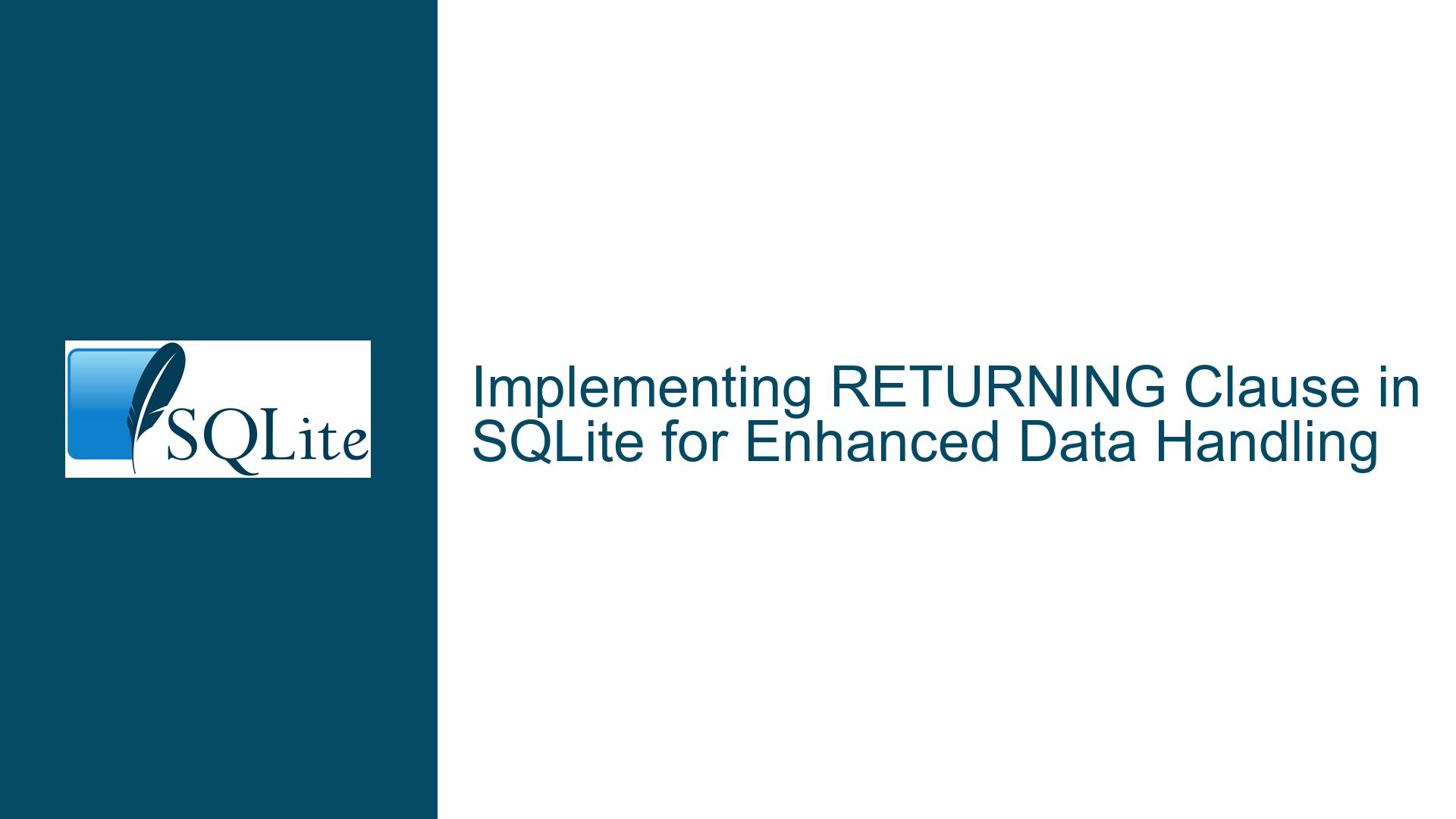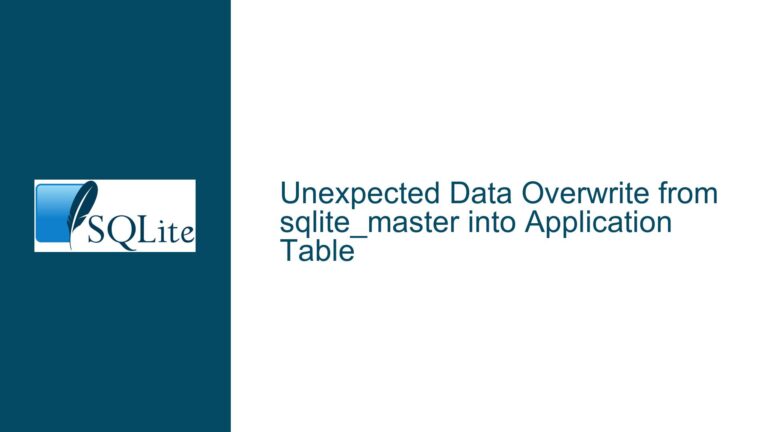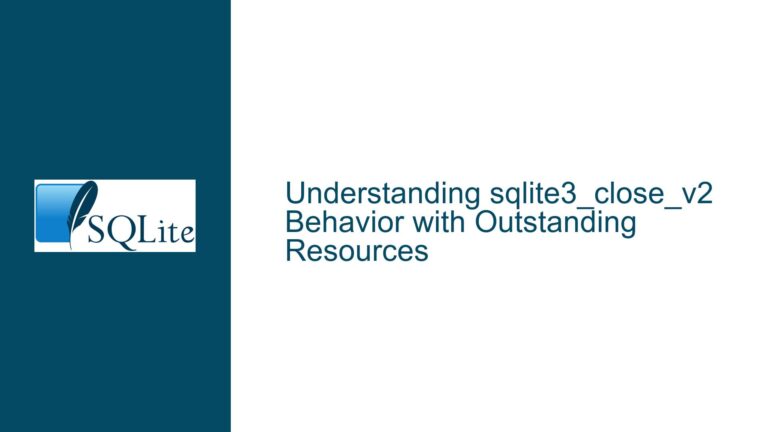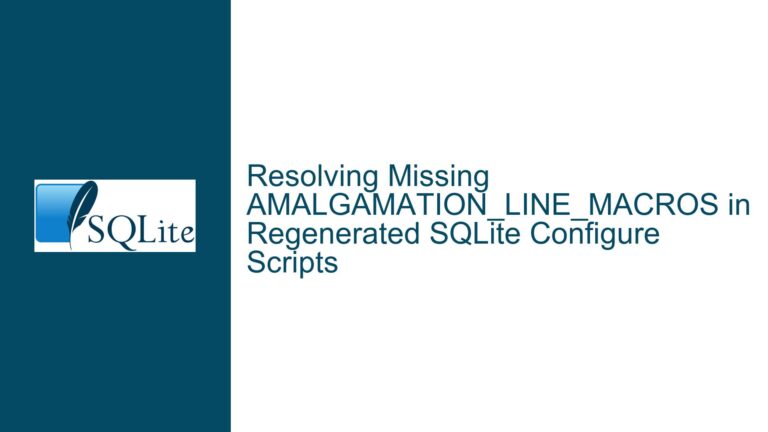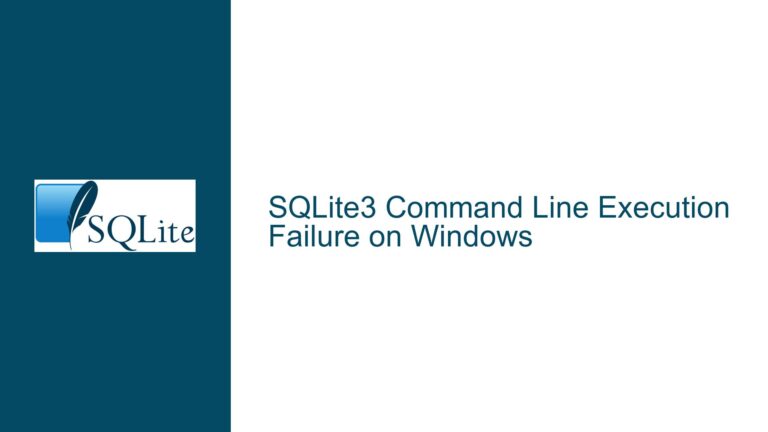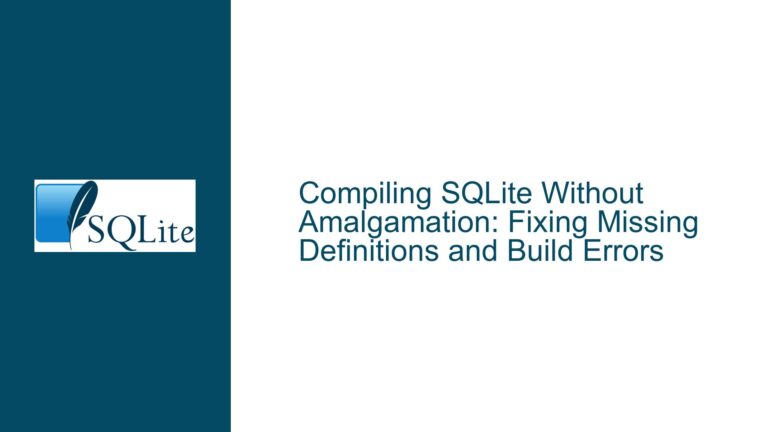Implementing RETURNING Clause in SQLite for Enhanced Data Handling
RETURNING Clause Limitations in CTEs and Subqueries
The RETURNING clause in SQLite is a powerful feature that allows users to retrieve the rows affected by an INSERT, UPDATE, or DELETE operation. However, its current implementation has notable limitations, particularly when used within Common Table Expressions (CTEs) and subqueries. The RETURNING clause is not supported in these contexts, which restricts its utility in more complex queries. This limitation can be particularly frustrating for developers who are accustomed to the more flexible implementations found in other databases like PostgreSQL.
In SQLite, the RETURNING clause can only be used at the top level of an INSERT, UPDATE, or DELETE statement. This means that if you want to use the RETURNING clause within a CTE or a subquery, you will encounter a syntax error. For example, consider the following query:
WITH updated AS (
UPDATE employees SET salary = salary * 1.1 WHERE department = 'Sales' RETURNING *
)
SELECT * FROM updated;
This query will fail because the RETURNING clause is not allowed within the CTE. The same restriction applies to subqueries. This limitation can be a significant hurdle when trying to chain multiple operations together or when you need to capture the results of a DML operation for further processing.
Interrupted Write Operations Leading to Index Corruption
One of the primary reasons for the limitation of the RETURNING clause in CTEs and subqueries is the way SQLite handles write operations and indexing. SQLite is designed to be a lightweight, serverless database engine, and as such, it has a more straightforward approach to transaction management and indexing compared to more complex databases like PostgreSQL. When a write operation is interrupted, such as during a power failure, SQLite relies on its journaling mechanism to ensure data integrity. However, this mechanism can sometimes lead to index corruption, especially if the write operation was in the middle of updating an index.
The RETURNING clause, when used at the top level, is relatively straightforward because it simply returns the rows that were affected by the DML operation. However, when used within a CTE or subquery, the situation becomes more complex. The database engine must ensure that the results of the RETURNING clause are correctly captured and made available to the outer query. This requires additional bookkeeping and can increase the risk of index corruption if the operation is interrupted.
Moreover, SQLite’s implementation of virtual tables adds another layer of complexity. Virtual tables are tables that are not stored in the database file but are instead generated on the fly by a module. The RETURNING clause is not currently supported for DELETE operations on virtual tables, which further limits its utility. This is particularly problematic for developers who rely on virtual tables for their applications.
Implementing PRAGMA journal_mode and Database Backup
To address the limitations of the RETURNING clause in CTEs and subqueries, one potential solution is to leverage SQLite’s PRAGMA journal_mode and implement robust database backup strategies. The PRAGMA journal_mode directive allows you to control the journaling mechanism used by SQLite, which can help mitigate the risk of index corruption during interrupted write operations.
There are several journaling modes available in SQLite, including DELETE, TRUNCATE, PERSIST, MEMORY, WAL, and OFF. Each mode has its own trade-offs in terms of performance and data integrity. For example, the WAL (Write-Ahead Logging) mode is often recommended for applications that require high concurrency and data integrity. In WAL mode, changes are written to a separate WAL file before being applied to the main database file, which reduces the risk of corruption during a crash.
To enable WAL mode, you can use the following command:
PRAGMA journal_mode=WAL;
In addition to setting the journal mode, it is also important to implement a robust database backup strategy. Regular backups can help you recover from data corruption or loss, especially if you are working with complex queries that involve CTEs and subqueries. SQLite provides several tools for creating backups, including the .backup command in the SQLite command-line interface and the sqlite3_backup_init API for programmatic backups.
Another approach to mitigating the limitations of the RETURNING clause is to use temporary tables to capture the results of DML operations. For example, instead of trying to use the RETURNING clause within a CTE, you can first perform the DML operation and store the results in a temporary table. You can then use the temporary table in your CTE or subquery. This approach is similar to the syntax used in PostgreSQL, where the results of a DML operation can be captured in a temporary table for further processing.
Here is an example of how you can use a temporary table to capture the results of an UPDATE operation:
CREATE TEMP TABLE updated_employees AS
UPDATE employees SET salary = salary * 1.1 WHERE department = 'Sales' RETURNING *;
WITH updated AS (
SELECT * FROM updated_employees
)
SELECT * FROM updated;
In this example, the results of the UPDATE operation are first stored in a temporary table called updated_employees. The CTE then selects from this temporary table, allowing you to use the results of the UPDATE operation in your query.
While this approach adds an extra step to your query, it provides a workaround for the current limitations of the RETURNING clause in SQLite. It also has the added benefit of making your queries more robust, as the temporary table can be used for multiple operations without the risk of index corruption.
In conclusion, while the RETURNING clause in SQLite has some limitations, particularly when used within CTEs and subqueries, there are several strategies you can use to work around these limitations. By leveraging SQLite’s PRAGMA journal_mode, implementing robust database backup strategies, and using temporary tables to capture the results of DML operations, you can enhance the functionality of your SQLite queries and ensure data integrity. These techniques not only address the immediate limitations of the RETURNING clause but also provide a foundation for more complex and reliable database operations.
